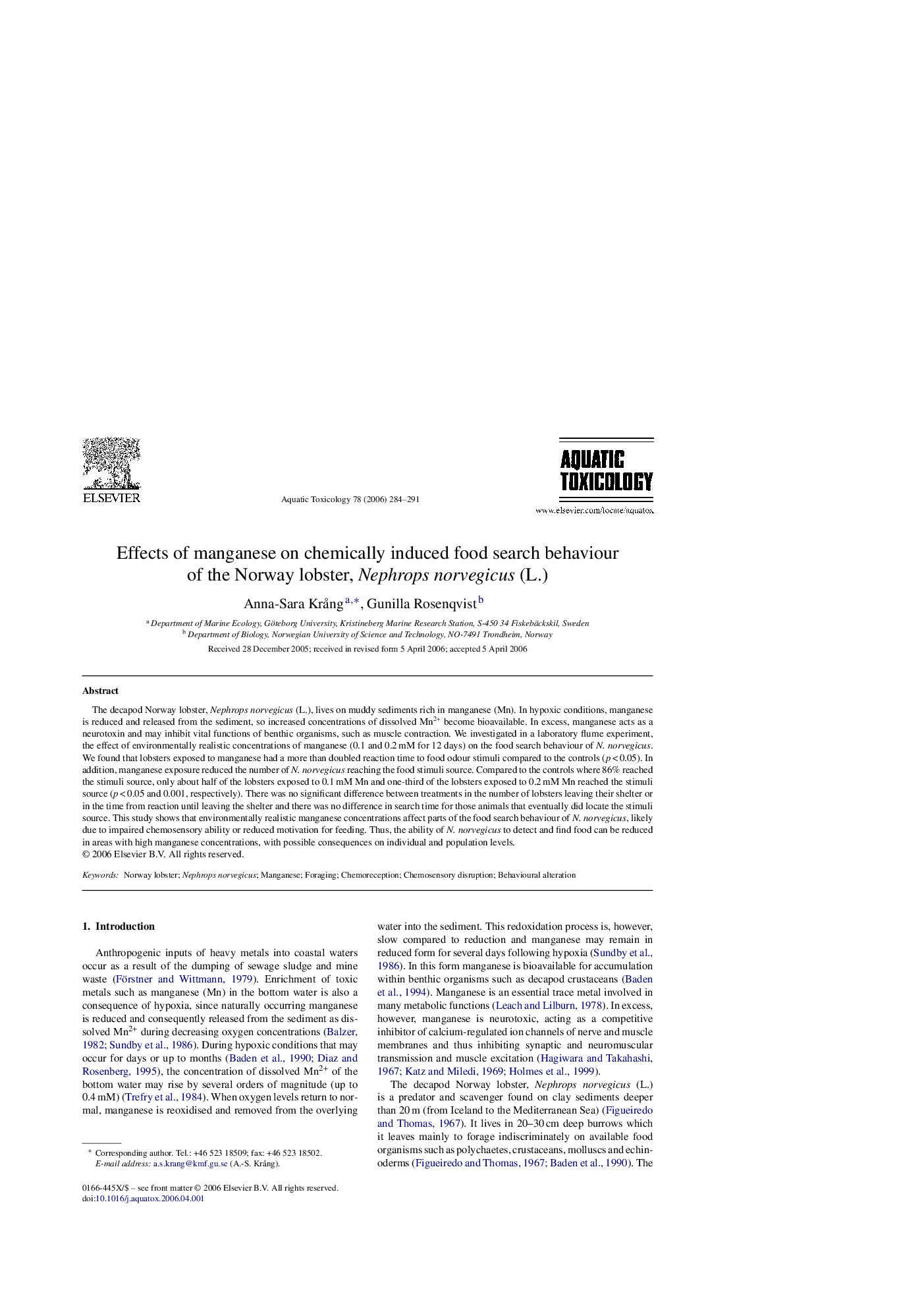| Article ID | Journal | Published Year | Pages | File Type |
|---|---|---|---|---|
| 4531428 | Aquatic Toxicology | 2006 | 8 Pages |
Abstract
The decapod Norway lobster, Nephrops norvegicus (L.), lives on muddy sediments rich in manganese (Mn). In hypoxic conditions, manganese is reduced and released from the sediment, so increased concentrations of dissolved Mn2+ become bioavailable. In excess, manganese acts as a neurotoxin and may inhibit vital functions of benthic organisms, such as muscle contraction. We investigated in a laboratory flume experiment, the effect of environmentally realistic concentrations of manganese (0.1 and 0.2 mM for 12 days) on the food search behaviour of N. norvegicus. We found that lobsters exposed to manganese had a more than doubled reaction time to food odour stimuli compared to the controls (p < 0.05). In addition, manganese exposure reduced the number of N. norvegicus reaching the food stimuli source. Compared to the controls where 86% reached the stimuli source, only about half of the lobsters exposed to 0.1 mM Mn and one-third of the lobsters exposed to 0.2 mM Mn reached the stimuli source (p < 0.05 and 0.001, respectively). There was no significant difference between treatments in the number of lobsters leaving their shelter or in the time from reaction until leaving the shelter and there was no difference in search time for those animals that eventually did locate the stimuli source. This study shows that environmentally realistic manganese concentrations affect parts of the food search behaviour of N. norvegicus, likely due to impaired chemosensory ability or reduced motivation for feeding. Thus, the ability of N. norvegicus to detect and find food can be reduced in areas with high manganese concentrations, with possible consequences on individual and population levels.
Related Topics
Life Sciences
Agricultural and Biological Sciences
Aquatic Science
Authors
Anna-Sara Krång, Gunilla Rosenqvist,
